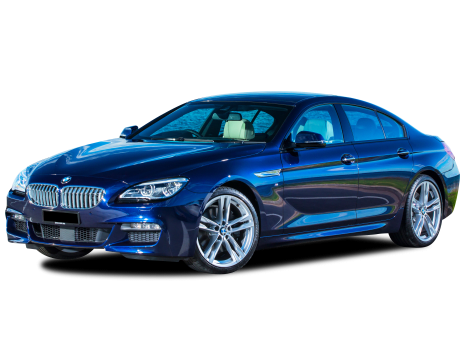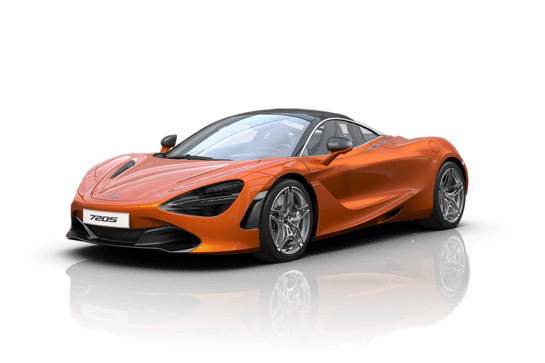
Jaguar F-Type VS Lamborghini Aventador
Jaguar F-Type
Likes
- Tarmac-tearing performance
- Surprising comfort
- Just look at it
Dislikes
- Thirsty
- Short on active safety tech
- Tight entry/egress
Lamborghini Aventador
Likes
- Styling, so much styling
- That V12 engine, the pure speed rush of it
- The noise, absolutely bonkers
Dislikes
- Not being able to see anything behind you or beside you
- The price. You could have five great cars for this much
- The sheer mass, width and weight of it
Summary
Jaguar F-Type
After a long gestation period where a variety of Jaguar corporate overlords toyed with the idea of a successor to the all-time iconic E-Type, the F-Type finally emerged in late 2013 to a global intake of breath.
It managed to capture just the right amount of Jag heritage, folded into a high-tech package, with a simple choice of supercharged V6 and V8 engines, housed in a supremely sleek convertible body.
Over time the formula has become more complex, with the arrival of a coupe version, powerhouse R and full-fat SVR variants, special editions including the exotic Project 7, and more recently, 2.0-litre, turbo four-cylinder models to make this stunning two-seater more accessible.
A late 2019 update added some extra catnip, including a redesigned nose and this is the flagship F-Type R, complete with supercharged V8 power and performance-focused underpinnings. Time to dive into this latest chapter of the Jaguar F-Type story.
| Safety rating | |
|---|---|
| Engine Type | 5.0L |
| Fuel Type | Premium Unleaded Petrol |
| Fuel Efficiency | 11.3L/100km |
| Seating | 2 seats |
Lamborghini Aventador
Too fast, too loud, too crazy, too dangerous, too big. All of these are phrases a supercar lover would never think to utter when considering the sanity-defying existence of the new Lamborghini Aventador S, and yet exactly the kind of things any reasonable person might say after driving one, or even witnessing it in motion.
Too much, clearly, is never enough in La La Lambo world, and it's certainly true that if you desire a car that will puncture your eardrums while rupturing your spleen and bruising your heart, this is the perfect vehicle for you.
Five years after its launch, the Aventador has been updated and upgraded - with new rear-wheel steering, an allegedly improved gearbox, tweaked styling and a button that says EGO - and uprated, with even more power that it clearly wasn't crying out for.
We went to Phillip Island to drive it around a high-speed track covered in rain, mist and suicidal geese.
| Safety rating | — |
|---|---|
| Engine Type | 6.5L |
| Fuel Type | Premium Unleaded Petrol |
| Fuel Efficiency | 16.91L/100km |
| Seating | 2 seats |
Verdict
Jaguar F-Type8/10
The Jaguar F-Type R is as fast and capable as it is beautiful. Although it's a little thirsty and comes up short on active safety, it's technically outstanding, delivering a stunning mix of performance, dynamics, and comfort.
Lamborghini Aventador6/10
The Lamborghini Aventador S is a hugely unnecessary car that probably wouldn't exist at all in any sane universe. Fortunately it's from Italy instead.
While it definitely has its flaws - it's simply too big, and too fast, to drive on public roads, and it's too heavy, and mental, to be a purist's track car - there is still something strangely charming about it.
It's the ridiculous design, those super-cool doors, the outrageous and deafening noises it makes, and what it does to your internal organs when you accelerate in it.
There are better, sharper and more affordable supercars than the Aventador S, but there are none that are anything like it.
Is the Aventador S your dream supercar, or would you prefer an F12 Berlinetta? Tell us what you think in the comments below.
Design
Jaguar F-Type9/10
Although it kicked off as a roadster, a coupe version of the F-Type was always part of the plan. In fact, Jaguar's C-X16 concept, that in 2011 previewed the eventual production car, was a hardtop.
Following the Coupe's public reveal at the 2013 Los Angeles motor show, I asked Jaguar's then head of design, Ian Callum, if the bean counters had vetoed the concept's ultra-cool side-opening hatch door; one of many styling hat tips to the E-Type. His response was a wry smile and slow nod of the head.
It's a shame that door didn't make it to the showroom floor, but the E-Type is still a strong design influence on its successor.
At close to 4.5m long, around 1.9m wide, and a fraction over 1.3m tall, the F-Type R looks more compact in the metal than it does in photographs, arguably the hallmark of a successful sports car design.
A long, flowing (front-hinged) bonnet (Jaguar calls its shape 'liquid metal' sculpture) projects forward from a rear-set cabin, with broad but tightly wrapped haunches behind it. The 20-inch, 10-spoke rims (in 'Gloss Black' with diamond-turned finish) fill the wheel arches perfectly.
I'm a huge fan of the tail-light cluster design, subtly reprofiled in the late 2019 update, which echoes the shape of the Series 1 E-Type and other classic Jags, but found it harder to warm to the outgoing F-Type's squarish headlight treatment.
Always a subjective call, but to my eyes this car's slimmer, more feline (LED) eyes and ever-so-slightly larger grille deliver a better front to rear balance. And slender, flush-fitting pop-out exterior door handles remain sub-zero cool.
Our 'Santorini Black' test car had been optioned with the 'Exterior Black Design Pack' ($1820) for an extra hint of menace. It applies body-colour to the front splitter, side sills, and rear diffuser, at the same time blacking out the grille surround, side vents, side window surrounds, rear valance, Jaguar script, F-Type badge and 'Leaper' emblem.
Jaguar describes this two-seater as a '1+1', confirming the F-Type's focus on the driver, and our test car's tan leather interior emphasises the fact.
Tan dash on the passenger side, complete with flying buttress-style grab handle for extra support when g-force starts to build. Contrasted by all black and all business on the driver's side.
A broad centre stack houses the 10-inch multimedia touchscreen, with easy-to-use dials for the climate control system below. And the 12.3-inch reconfigurable hi-def instrument cluster (with graphics unique to the F-type) is a model of clarity and simplicity.
The latter offers a choice of display themes, including full nav map, but the default mode highlights a large central tachometer. Nice.
An impressive design feature carried over from the previous model is deployable front air vents. The dashtop remains flat until a given climate control temperature setting causes an upper section, housing a pair of adjustable vents, to gently rise. Very cool (no pun intended).
Lamborghini Aventador9/10
The lovely and loquacious Italians from Lamborghini showed us a revealing little sketch at the car's launch, which looked a little bit like a bad tattoo but said a lot about their design ethos. It featured mean-looking sharks and menacing cobras morphing with an outline of the Aventador, and was meant to represent the approach to further man-ing up the looks of this S version.
The shark fins are clearly evident in the new and even bigger front splitter, the cobra must be hiding under the engine cover somewhere, while the new rear exhaust shape is apparently modelled on the Space Shuttle.
There are a few touches of the classic Countach, apparently, and plenty of "aerospace" design, which means they've tried to make it look like a fighter jet.
The overall effect is about as over the top as Lady Gaga marrying Ivanka Trump, and yet because its a Lamborghini, you find yourself loving it anyway. Absurdity is their reality. And how could you not fall for any car with those doors?
The interior is not as classy feeling as a Ferrari, but it has a certain brash, flash-cash opulence to it that makes you smile as well.
Practicality
Jaguar F-Type7/10
If you're intending to daily drive your F-Type R, make sure your yoga fees are up to date, because entry and egress are for the fleet of foot and flexible of limb.
Once inside, though, within the bounds of its two-door coupe format, the F-Type offers an array of storage options, including a decent glove box, centre storage box/armrest, small door bins, a netted pocket on the top of the bulkhead between the seats, and a pair of console cupholders.
{{nid:node}}
Power and connectivity runs to a 12V socket in the dash, with another in the central storage bin, alongside two USB-A ports, and a micro SIM slot.
Notwithstanding the (alloy) space saver plonked on the boot floor, the F-Type Coupe delivers worthwhile cargo space, with 310 litres on offer, rising to 408 with the load cover removed.
That's enough to swallow small (36-litre) and large (95-litre) suitcases together, and there are two (nicely chromed) tie-down anchor, as well as elasticised retaining straps at either end of a small ledge on the bulkhead.
Lamborghini Aventador2/10
Yes, the Aventador S is a car, and it will take you from Point A to Point B, although you might leave some of your life expectancy behind on every trip, but other than that, practicality is not a selling point.
It is 4.8m long, just over 2m wide and a mere 1.14m high, the giant Lambo is as thick across the hips as a Toyota LandCruiser, and as pleasant to climb in and out of as an iron lung.
It also burns slightly more fuel than a Space Shuttle launch and is virtually impossible to see out of, but owners won't care because every other car will be behind them somewhere, and they'll only be looking out for plate-glass windows to admire themselves in anyway.
There are no cupholders (although apparently you can option them) and there's virtually no room to store anything at all. None of this matters, of course, because if the people who buy an Aventador S want practicality they'll simply choose one of the other 20 cars in their personal fleet.
Price and features
Jaguar F-Type8/10
It's hard to pin down direct competitors for the $262,936 F-Type R, except one; Porsche's 911 Carrera S, a clear price and performance rival at $274,000.
With a 3.0-litre, twin-turbo 'flat' six producing 331kW/530Nm the 911 is capable of accelerating from 0-100km/h in just 3.7sec, which (surprise, surprise) exactly matches the Jag's claimed performance number.
Cast the net a little wider and you'll snag the likes of Nissan's GT-R Track Edition on the low side ($235,000), and the Mercedes-Benz S 560 Coupe ($326,635) for around $50K above the F-Type's asking price. So, the standard features list needs to be impressive, and long story short, it is.
Drilling down to the depths of detail on this car's equipment spec would need a review of its own, so here's the highlights package.
The 10-inch 'Touch Pro' multimedia screen manages a 380-watt Meridian audio system featuring 10 speakers (including subwoofer), digital radio, dynamic volume control and a 10-channel amp, as well as Apple CarPlay, Android Auto, and Bluetooth connectivity.
It's also the gateway to the car's configurable dynamic set-up, 'Navigation Pro', phone connection, ambient lighting, reversing camera, and a lot more.
Full-grain 'Windsor' leather is applied to the 12-way, electrically-adjustable (plus memory) performance seats. There's also a 12.3-inch customisable digital instrument cluster, cruise control (and speed limiter), keyless entry and start, auto rain-sensing wipers, auto-dimming and power folding heated door mirrors (with memory), a switchable active exhaust, LED headlights, DRLs and tail-lights, as well as an electrically adjustable steering column (with memory), climate control, powered boot lid, 20-inch alloy wheels, racy red brake calipers, and specific 'R' branding on the leather-trimmed sports steering wheel, door tread plates, and centre console.
Lamborghini Aventador7/10
On the one hand, the $788,914 price for this new S version of the Aventador (the S stands for "Something that is better" according to the Italians) is problematic, and slightly ridiculous, because it seems a lot to pay for a car that would have you shot on sight on suspicion of speeding by the Victorian Police and is about as well suited to Australian conditions as an igloo.
On the other hand, which is covered in thick gold rings with a fat Rolex attached to its wrist, it makes perfect sense, because its vast and silly size perfectly complements the very nature of the car, which is perhaps the biggest 'look at me, I'm rich' statement short of sky writing your bank balance.
The sort of person who buys a car like this, rather than the cheaper, far more sensible and, frankly, enjoyable Lamborghini Huracan, actually wants to pay a lot of money, because it's part of the fun.
Sure, that price only gets you two seats but they're very sexy ones, and truly grippy to sit in, which they need to be in a g-force monster like this.
There's only one spec for an S buyer, and it includes little treats like Apple CarPlay, but if you want the telemetry system, to record your lap times, it's an optional extra, at $3400.
The one feature every owner will want to show off, though - aside from the obvious ones like the scissor doors and 'Bombs-away!' starter - is the EGO button. This is basically a fourth setting to add to the car's existing Strada (Street in Italian), Sport and Corsa (Race) options, but confusingly, because it is entirely personalisable, it actually offers another 24 settings when you press it.
Sure, it's slightly pointless, but at least it's honest, because EGO is what this car is all about.
Each of those settings also changes the Aventador S's lush and wondrous Kombi dash screens (the Lamborghini-styled version of owner Audi's Virtual Cockpit), offering race-car like giant tachometers and even a graphic that shows you which way your wheels are pointing. Not that you'll have time to look at it when exploring your car's 350km/h top speed.
Under the bonnet
Jaguar F-Type9/10
The F-Type R is powered by Jaguar's all-alloy (AJ133) 5.0-litre supercharged V8 engine, featuring direct-injection, variable (intake) cam timing, and an Eaton (Roots-type) blower to produce 423kW (567hp) at 6500rpm, and 700Nm from 3500-5000rpm.
Drive goes to all four wheels via an eight-speed 'Quickshift' automatic transmission and Jaguar's own adaptive AWD system with 'Intelligent Driveline Dynamics' (IDD).
The AWD system is based on an electro-hydraulic multi-plate (wet) clutch, controlled by a centrifugal electro-hydraulic actuator. Default front/rear drive balance is 10/90, although Jaguar claims even a full shift of power from 100 per cent rear to 100 per cent front takes just 165 milliseconds.
The IDD system continuously monitors each wheel's speed and traction, suspension compression, steering angle and braking force, as well as the car's rotational state.
It then uses an algorithm to determine which wheel(s) are likely to lose traction, and before grip is lost, transfer drive to the wheels that can make best use of it.
Lamborghini Aventador7/10
Let's start with the bad news, which is that the all-new seven-speed ISR (Independent Shifting Rods) gearbox that was supposed to fix the old-tech lurchiness of the Aventador's driveline is still so far off the pace of modern, dual-clutch transmissions that it's mildly embarrassing.
Change gear at speed in this vicious V12 and you're in for a kind of stop-motion, Wallace and Gromit experience. There's no doubt you can feel the aggression of the shifts, but they do remind you of a long-past time when upshifts meant a short break between rushes of acceleration, rather than the seamless shove you now get from a Ferrari (or even a Golf GTI).
Your gear changes can be so violent that they knock the breath out of you, but it could be argued that this merely suits the personality of the car, which in turn reflects the absurdity of its manic engine.
Power has, somehow, been raised by 30kW to an astronomical 544kW at a deafening and ballistic 8400rpm. Lamborghini says the new tune gives even more torque at higher revs, but its maximum figure of 690Nm is actually less than Ferrari's V8-powered 488, which has 760Nm.
The difference is turbochargers, of course, a limp-wristed affectation of a technology that Lamborghini still eschews.
They will tell you it's all about the way the car performs and accelerates, and with a 0-100km/h time of 2.9 seconds (not even a whisker faster than the standard Aventador, which shows you how difficult those times are to improve on), a 0-200km/h dash of just 8.8 seconds, and 0-300 in 24.2, it does do these things well.
What it's really about, though, is the operatic purity and visceral violence of the way the engine sounds, and with its all-new muffler and exhaust system, the S really does take big, shouty showiness to new levels.
Indeed, I would venture this is the loudest road car my ears have ever been assaulted by (a Porsche 918 is louder, but it's really a race car with a rego sticker). Under acceleration it is as eyebrow-liltingly loud as the front row of an AC/DC concert back in the 1990s, but it is the series of explosions you get on the overrun when fear pushes your foot off the throttle that are truly astounding. It sounds like someone throwing steel rubbish bins full of grenades into a cement mixer.
Crazy? Yes. Unnecessary? Yes, but it is wonderful.
It's possible that, as some of my colleagues claimed they could notice, the S is more instantly ballistic when you press the accelerator than the normal Aventador, but frankly that's like comparing being shot with different guns. Let's just say it's a hugely violent, chest-beating engine. And I love it.
Efficiency
Jaguar F-Type7/10
Claimed fuel economy for the combined (ADR 81/02 - urban, extra-urban) cycle is 11.3L/100km, the F-Type R emitting 269g/km of CO2 in the process.
Despite the standard auto stop/start function, over close to 350km of city, suburban, and freeway running we recorded a (dash-indicated) average of 16.1L/100km.
That's a solid drinking habit, but it kind of goes with this performance territory, and we did lean into the throttle on a regular basis.
Recommended fuel is 95 RON premium unleaded, and you'll need 70 litres of it to fill the tank. That equates to a range of 619km in line with the factory claim, and 434km using our real-world number as a guide.
Lamborghini Aventador3/10
Yes, it sure does consume fuel. Quite a lot, with claimed figures of 26.2L/100km on the urban cycle, and a combined urban/highway figure of 16.9L/100km. Frankly, you'd be lucky if you kept it under 30.0L/100km. It's thirsty work to drive.
Driving
Jaguar F-Type9/10
Yep, no surprise, the 2021 Jaguar F-Type R is a proper, rip-snorting, beast of a machine. Weighing in at just over 1.7 tonnes, with 423kW/700Nm to propel it forward, in terms of straight line acceleration, it's every bit the scalded cat.
Bury the right foot and it will storm from 0-100km/h in just 3.7 seconds, with furious aural accompaniment courtesy of the 4.0-litre supercharged V8 and sports exhaust system. Electrically-actuated bypass valves in the latter's rear silencer remain closed until they automatically open under load, and boy, do they open up.
Prospective F-Type R owners wishing to remain on good terms with their neighbours will be pleased to know there's a 'Quiet Start function', but once you're a few blocks clear the engine is capable of alerting the entire suburb to you presence, complete with raucous crackles and pops on the overrun.
All 700Nm of maximum torque is available from 3500rpm through to 5000rpm, and mid-range thrust is ferocious. If you have access to a long enough private road Jaguar claims this car will storm on to a (electronically-limited!) maximum velocity of 300km/h.
The eight-speed auto transmission has picked up several tweaks courtesy of the XE-based SV Project 8, and it's brilliant. A conventional torque-converter based unit, rather than a dual-clutch, it's dubbed 'Quickshift', and that it does. Manual flicks between ratios, using the wheel-mounted paddles, are rapid and positive.
Head for your favourite B-road, and it's the F-Type R's ability to put every bit of its power down, without fuss, that impresses next. Push into a series of tight corners and the car grips, settles, and simply surges from one bend to the next, the tricky AWD system seamlessly shuffling torque between the axles and individual wheels.
The standard electronic active diff, and torque vectoring (by braking) also help keep everything under control, turning backroad tryhards into apex hunting virtuosos.
Suspension is by (aluminium) double wishbones front and rear, with revised springs and anti-roll bars added in the 2019 upgrade. Continuously-variable dampers underpin the 'Adaptive Dynamics' system, learning your style and adjusting accordingly.
The electrically-assisted power steering combines great road feel with satisfying accuracy, and the car feels balanced yet agile and responsive in enthusiastic driving.
In a more relaxed mode the adaptive set-up detects rough road conditions and adjusts the suspension settings for greater ride comfort. According to Jaguar, the damper valves and control algorithms have been recalibrated to improve low-speed comfort and high-speed control, and I can vouch for their effectiveness.
Not long after steering this F-Type R I spent some time in the supercharged V6 F-Type P380 R-Dynamic, and this R is far more compliant.
Rubber is a specially-developed Pirelli P Zero (265/35 fr - 305/30 rr), and the supremely efficient brakes are ventilated 380mm at the front, and 376mm rear.
Lamborghini Aventador8/10
Piloting an Aventador around city streets is a challenge, partly because it's like trying to hold a four-metre high, 400kg Rottweiler on a leash, but mainly because it's stupidly wide and you can't see anything from the driver's seat.
Lamborghini has tried to improve the experience of driving it at low speeds with a new rear-wheel steering system, that turns the rear wheels in the opposite direction to the fronts at low speeds, effectively shortening the wheelbase and making it almost liveable in car parks, but then turns them in the same direction as the fronts at higher speeds, for better turn-in and handling.
This was the first time I've ever been fortunate, or perhaps mad, enough to drive an Aventador on a race track, and a fast one at that in Phillip Island, which was covered in a fairly typical Arctic storm front, with enough standing water to attract large, suicidal geese to several corner apexes, including the one at the top of the straight, where the big Lambo was hitting 230km/h before we'd even passed the pits (it had dried out a bit, briefly, for that lap).
With open spaces in front of you, this car delivers the kind of acceleration that forces all the air out of your body, or perhaps you just forget to breathe because your brain is too busy freaking out. It's an invigorating sensation, but not without fear, a bit like jumping out of a plane, and equally addictive.
All that rocket thrust really is its party trick, though, because as mentioned the gear shifts are a bit of a shambles, and the sheer size, and 1575kg weight, of the thing makes it feel like a handful around tight corners.
It's very good around a track for what it is, but what it is is too heavy and too big for circuit driving. Again, you'd have to think a Huracan would be more fun, and would scare you less.
But then it did strike me, on my last lap, as I attempted to find some saliva in my dry mouth, that there's something wonderfully old school, and traditionally Lamborghini, about a supercar that genuinely frightens and intimidates you when you try to push it.
I can't imagine buying one myself, but I can imagine why a certain kind of enthusiast would want to.
Safety
Jaguar F-Type7/10
The F-Type hasn't been assessed by ANCAP, but as well as the usual active safety suspects like ABS, EBD, traction and dynamic stability controls, the R features an AEB system operating at speeds above five km/h, Vehicle detection is in place at speeds of up to 80km/h, and pedestrian detection up to 60km/h.
The AWD system facilitates specific 'Rain', 'Ice', and 'Snow' modes, plus there's active high-beam, lane keep assist, a reversing camera, as well as front and rear parking sensors, and a 'Driver Condition Monitor.'
But cross-traffic alert (front or rear) is missing-in-action, blind spot assist is an option ($900), as is park assist ($700), and tyre pressure monitoring ($700). Any car that's crested the $250K barrier should have all of these as standard.
If an impact's unavoidable there are six airbags (front, side, and curtain). But remember, the front passenger seat is a no-go zone for a rear-facing child restraint. And Jaguar says, "A child should only travel in the front passenger seat if it is essential and national or state legislation permits it."
Lamborghini Aventador7/10
You're not getting AEB in a car like this, as the sensors would ugly up the front of the car, and there's nowhere to fit them. But you do get a 'passive pedestrian protection system', which is nice.
Some markets get a driver's knee airbag, but sadly we don't, so you have to put up with just four airbags in total, and a collapsible steering column.
Ownership
Jaguar F-Type8/10
Jaguar covers its Australian new car range with a three-year/100,000km warranty, which looks particularly stingy next to the mainstream market norm of five years/unlimited km, and lags other premium players like Mercedes-Benz and Genesis, both sitting at five years/unlimited km.
On the plus side, paint and corrosion (perforation) are warranted for three years, and roadside assistance is complimentary for 12 months.
And on the big plus side, scheduled servicing for the F-Type (determined by an on-board service interval indicator) is free-of-charge for five years/130,000km.
Lamborghini Aventador5/10
You can have a five-year warranty with your Italian supercar, but it will cost you $22,200. Or you can have one for four years for $11,600. Both of those seem like a lot of money, but it's the big jump in year five I'd be worried about.








































